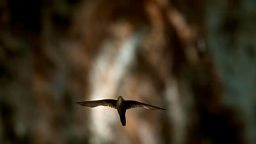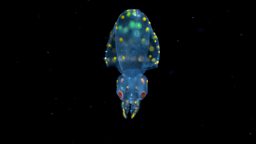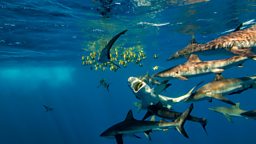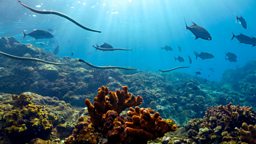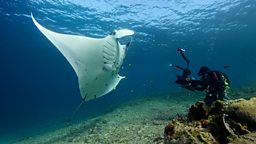The search for the sea bunny
By Stefan Hunt, Assistant Producer
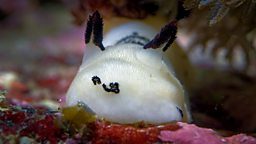
I had been given a mission: to film a blind, underwater sea slug known as the sea bunny, which uses its ‘ears’ to sense chemicals in the water, and feeds on a poisonous blue sponge in order to make itself toxic to predators. It felt as though I was being sent to pick up a pot of tartan paint, but surprisingly, this wasn’t a practical joke from the Executive Producer: the sea bunny turned out to be real. But how to tell its story?
It felt as though I was being sent to pick up a pot of tartan paint...
We headed to Anilao in the Philippines, one of the most biodiverse marine habitats on the planet. An area famous in the diving world for a plethora of underwater critters and specifically nudibranchs, also known as sea slugs. It was a stunning location; imagine picture-perfect tropical islands, topped with palm trees, surrounded by spectacular coral reefs, bustling with life.
Trying to find a slow-moving critter on a thriving coral reef, which isn’t any bigger than your little finger was going to be a challenge. Luckily, we had a team of highly-experienced Filipino dive guides, who have spent years looking for weird and wonderful nudibranchs. Every year, new species of nudibranchs are discovered in this area. Peri, our nudibranch specialist, has even had one named after him, Hypselodoris perii. It didn’t take Peri and his posse of sea slug spotters long to locate a sea bunny.

Now that we had our leading character, we needed to film the little thing. Christina Karliczek Skoglund, an expert underwater cinematographer, was given the challenge of capturing the sea bunny on camera.
To film the daily life of this critter, we needed to spend hours underwater.
One of the biggest issues with the sea bunny was time. To film the daily life of this critter, we needed to spend hours underwater. Being essentially a glamorous underwater slug, the sea bunny moves at a snail’s pace. To get the best shots of the sea bunny going about its normal life, Christina needed as much time underwater as possible. But using a traditional SCUBA setup, most divers might get just an hour underwater. Luckily, Christina had her specialist rebreather diving system, a setup originally developed by the military, which recycles the air the diver exhales. This allowed Christina to spend over four hours beneath the surface at a time, popping up for lunch on the support boat before heading back down for another stint in the ‘underwater studio'.
The second challenge of filming the sea bunny was its size. Being not much bigger than a snack-sized chocolate, we needed some serious macro lenses to show this slug in all its glory – but to get the most out of these lenses, you need a lot of light. Large underwater lamps had to be floated delicately into position. Balloons were tethered to the lighting rig at the surface, and then slowly deflated to allow the equipment to sink into the sea. The divers were then able to carefully position the lights on the sea floor. Finding clear patches of sand to place two lights and a tripod for the camera, whilst avoiding damaging any coral was no simple task. Currents, sunlight and ocean visibility all had to be just right for the sea bunny to look its best on camera.
Under difficult conditions, Christina and the dive team captured some incredible moments. To complement their efforts and to properly showcase the sea slug, giving it the big close-ups it deserved, we knew we needed to go further. So we set about building our own miniature reef in a specially-adapted saltwater tank right on the edge of the sea. Under Peri’s expert guidance, we were able to briefly relocate a sea slug into the tank, to capture some perfect ‘hero’ shots in extreme close-up that simply wouldn’t have been possible in the open ocean.
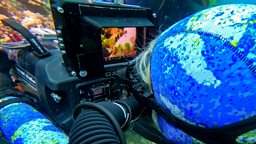
It took a lot of patience and dedication from the whole team to capture the life of this little superstar...
Following this tiny, slow-moving creature day in and day out gave me a whole new appreciation for the world of the coral reef. Seeing the same creatures, over several weeks, going about their daily routines was fascinating. After three weeks of hard work, with the team spending hundreds of hours underwater, the sea bunny sequence was finally complete. It took a lot of patience and dedication from the whole crew to capture the life of this little superstar – but all the hard work was definitely worth it to get a glimpse into the intricate world of Asia’s coral reefs.
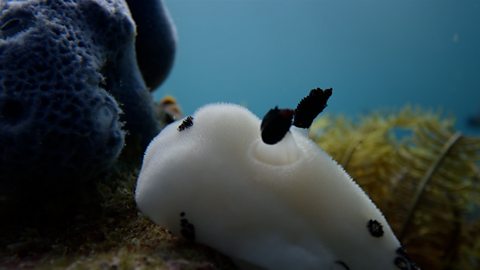
The sea bunny is untouchable
A sea bunny evades the dangers of the coral reef by becoming toxic.

